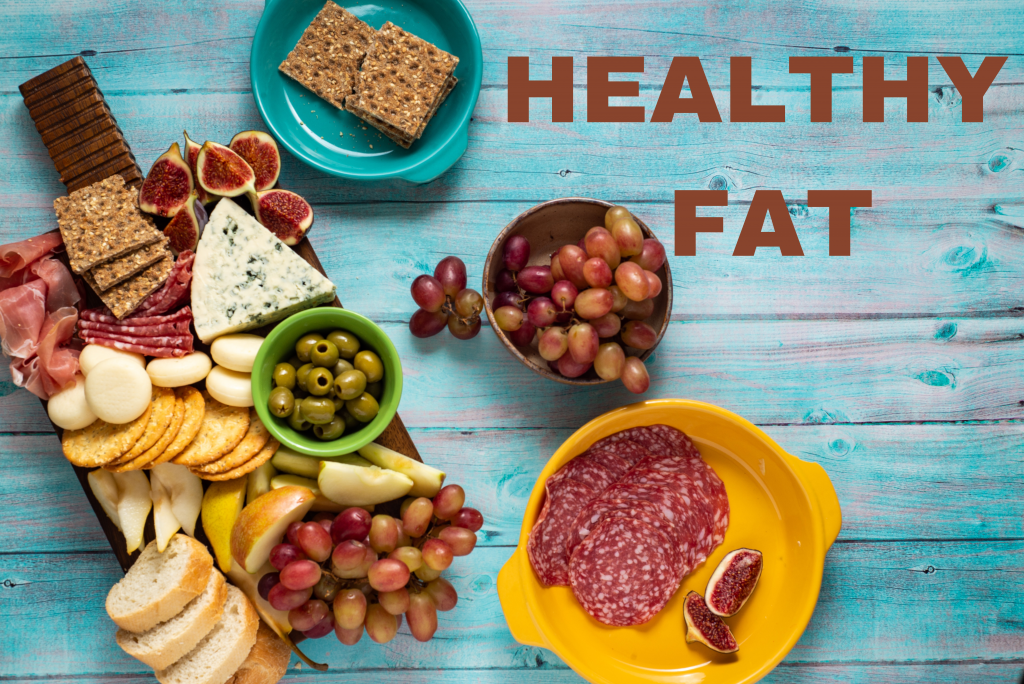Healthy Fat is essential:
We have always heard that fat is bad and we should try to reduce fat
But in the following article
I will discuss some healthy fat which is essential and those healthy fats that we need to eat.

FAT IS ESSENTIAL
AHHH, FATS! I LOVE them as much as the next person, maybe even more. Yummy, satisfying, nurturing, filling fats.
There is so much joy in fats and in the creaminess and richness they add to a meal, so it’s a good thing that there are many fats that are GOOD for us! So good for us, that fat should count for 20 to 35 percent of our total energy intake.
I’m talking essential fatty acids, baby. These are the fats that keep our hair and skin glowing and support the function of our organs (especially the brain and liver).
Fats also provide a gentlemanly escort to the vitamins and minerals we ingest from plants, some of which aren’t of any use to our cells unless they are partnered with fats.
Essential fatty acids are just that, essential to our health.
Of course, there are also some fats that are not so good for us, including fats derived from animal protein sources and animal products (like dairy),
As well as scary fats like trans fats, which are chemically engineered fats that the food industry created
To extend the shelf life of snack foods (more on that later).
But for now, let’s focus on the fats we love to love.
Remember, the right amount of fat is a necessary component of your diet!
It gives you energy. It gives you essential nutrients, like vitamins A, D, and E.
Yay fat!!
A SPOON FULL OF FAT HELPS THE VITAMINS GO DOWN
When we eat vitamins from plants and animals, our bodies have different ways of absorbing and using them.
Some vitamins are water-soluble, which means that they dissolve in water, and the body does not hold on to them for very long.
B-complex vitamins and C vitamins are examples of water-soluble vitamins.

Other vitamins are fat-soluble, which means that they can be dissolved and absorbed by the body only in the presence of fat.
Think olive oil or fresh mozzarella with tomatoes.
Fat-soluble vitamins can be stored for weeks or months, vitamin A, D, E, and K are fat-soluble.
RE-FRIENDING FAT
Since the 1980s, fat has earned a bad rap. If you are in your twenties now, that means that during your formative years, while you were taking in information about your health and nutrition and figuring out how you had been eating,
the world around you was outfitting fat with a pitchfork and a tail, making it out to be a demon hell-bent on your destruction
(or at least the destruction of your ability to fit into skinny jeans).
This demonization of fat was not only misleading:
it also had the unintended result of making rich, decadent forms of fat (like cheese-cake, ice cream, sundaes, or anything smothered in melted cheese)
extra alluring that thing that you really really want but you absolutely mustn’t, should not have.
So let’s clarify what fat really is and put this issue to rest. First, I offer you five fast facts about fats and why they are so good for you.
- Fat enhances the flavor, texture of food and helps all those herbs and spices and flavors really WOW your palate.
- It keeps your skin from being rough and scaly
- Fat helps your body absorb vitamins.
- It provides you with fuel throughout the day. Fat boosts brainpower.
- The two key things to remember about fat are that you must select the right KINDS of fat,
- and you must be aware of HOW MUCH of it you are eating.
When it comes to the amount of fat you eat, moderation is key. When you eat more fat than is recommended, you can increase your risk of developing heart disease and obesity. Because fats are more energy-dense than proteins and carbs, a little goes a long way. Just like anything else in life, too much of a good thing can still be, well, too much.
THE FATS WE LOVE
When it comes to choosing your fats, you want to aim for the unsaturated fats variety. Unsaturated fats are liquid at room temperature.
As with many other nutrients, your body needs these, but it can’t make them,
so it’s essential to get them from the food you eat.
There are two kinds of unsaturated fats: polyunsaturated and monounsaturated….
THE FATS WE LIMIT
When we are choosing our fats, we want to limit the number of saturated fats, trans fat, and cholesterol that we select.
These fats are the ones that may bear a threat to the health of our arteries and are the ones usually found in fast food and processed foods,
As well as in dairy products, such as butter, cheese and milk, and meat products . . .
COOKING WITH FAT
At home, I cook with olive oil
Especially when I’m making roasted vegetables and chicken, and I drizzle olive oil over avocado and parmesan. When it comes to frying, I love grapeseed oil. Which oils should you use? That’s a matter of taste and of the smoke point . . .
CHOOSE WISELY!
Think of fats as being like a group of people at a party.
Some people are wonderful and well worth your time and some are jerks, and it is your job to judge each of them on merit.
While some fats – the saturate and trans fats – are like the alluring but ultimately destructive guy you really shouldn’t date.
Others are like the nice guy next door that your best friends keep wishing that you would fall for.
So olive oil, yes! I’d love to spend more time with you. Margarine, no, I’m afraid I’m busy washing my hair on Friday night.
With so many heart-healthy fats out there to try, you will always have something delicious and full of
vitamins and minerals to pour, whisk, and drizzle.
